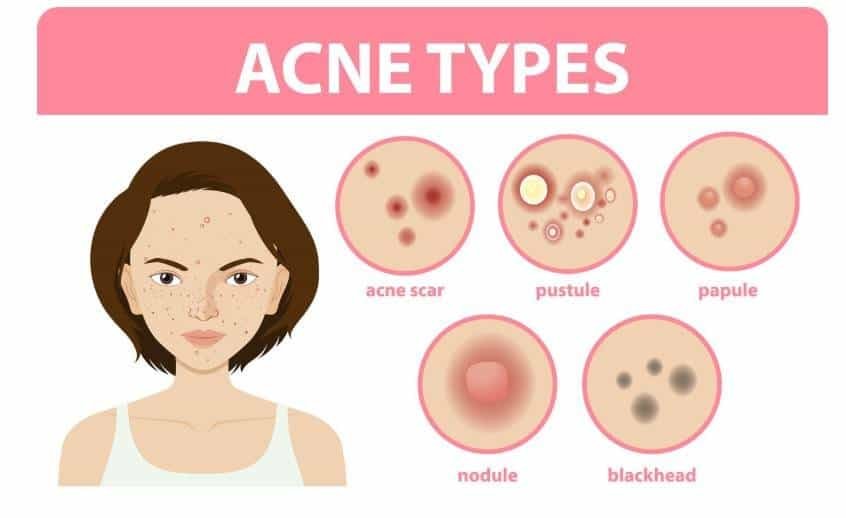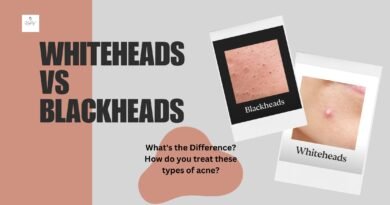Acne Scars: Causes, Treatments & Skincare That Works
Acne is frustrating on its own—but what’s often more upsetting is what it leaves behind. Acne scars and post acne marks can linger for months or even years, affecting not just how your skin looks, but how you feel about it. If you’ve been searching for how to get rid of acne scars or how to get rid of acne marks, you’re not alone.
In this guide, we’ll explore why acne scars happen, the difference between red or dark marks and deeper scars, the best products for acne scars, and realistic ways to treat and fade them with both skincare and in-office procedures.
Why Treating Active Acne Matters First?
Before we talk about how to fade acne scars, it’s essential to understand one key rule: scars are much harder to treat than acne. The best way to prevent scars is by consistently managing breakouts early on.
When acne becomes inflamed especially large, red, or cystic pimples—it can damage the deeper layers of skin. This leads to either loss of tissue (sunken scars) or excess tissue (raised scars). So, a smart skincare routine for acne control is your first step in avoiding long-term skin damage.
Using gentle, non-comedogenic products can reduce irritation and prevent worsening of acne. Avoid picking or squeezing pimples, as this increases the risk of scarring. Seeing a dermatologist early can help tailor treatments and reduce the chance of permanent marks.
Types of Acne Scars and Acne Marks

Acne-related discoloration and texture changes fall into two broad categories:
1. Pigmentary Acne Marks
These are post acne marks that change your skin color without affecting texture. They include:
- Post-inflammatory erythema (PIE): Red or pink spots left after inflamed pimples, common in fair skin tones.
- Post-inflammatory hyperpigmentation (PIH): Brown or dark spots that appear after acne, especially in medium to dark skin tones.
- Hypopigmentation: White or light patches where pigment was lost. These are harder to treat.
These marks can fade on their own but often need help from targeted skincare for acne scars to speed up healing.
2. True Acne Scars (Textural Changes)
These are permanent structural changes caused by damage deep within the skin. They can be:
- Atrophic scars: Depressed or sunken scars, like icepick, boxcar, or rolling scars.
- Hypertrophic scars: Raised, thick scars due to excess collagen.
While topical products have some effect on pigment, they do not reverse structural damage. For that, you’ll need professional dermatological treatments.
Skincare That Helps Fade Acne Marks
For pigment-based scars (red or dark spots), the right products for acne scars can help lighten acne scars over time. Here’s what to look for:
Retinoids (Adapalene, Tretinoin)
Promote cell turnover and collagen production. Help fade discoloration while also preventing new acne. They also smooth skin texture, making scars less noticeable over time.
Niacinamide
Niacinamide is an anti-inflammatory ingredient that helps even out skin tone and reduce post-acne redness and spots. It also supports the skin barrier, making it ideal for sensitive or acne-prone skin.
Azelaic Acid
Brightens the skin, fights acne, and improves both PIE and PIH. A great all-rounder for sensitive skin. It gently exfoliates to clear pores and prevent future breakouts while fading marks.
Tranexamic Acid
Targets stubborn pigmentation and helps eliminate pimple scars caused by inflammation. It works well alongside other brightening agents to enhance overall skin clarity.
Sunscreen (Especially Tinted)
Daily use of broad-spectrum SPF is non-negotiable. Tinted sunscreens with iron oxides are especially helpful in reducing and preventing post acne marks caused by UV exposure. Protecting your skin from the sun prevents scars from darkening and becoming more noticeable. Make sunscreen application a daily habit, even on cloudy days or when indoors near windows.
Using these ingredients consistently can fade acne scars over weeks or months, depending on skin type and severity.
Innovative Ingredients to Watch
In addition to classic actives, newer ingredients are gaining attention:
- Thiamidol: A newer skin-brightening agent shown to work on hyperpigmentation.
- Bakuchiol: A gentle, plant-based alternative to retinol, safe for sensitive skin.
- Centella asiatica (Cica): Helps soothe redness and supports barrier repair—found in popular products like Dr. Jart’s Tiger Grass Camo Drops.
While these newer ingredients may help lighten acne scars, they usually work best when combined with proven actives like retinoids and niacinamide.
Why Topicals Aren’t Enough for Deep Scars?
When it comes to deep acne scars, like icepick or boxcar types, even the best skincare for acne scars can only do so much. These scars form due to structural damage in the deeper layers of skin. To rebuild collagen and improve texture, in-office procedures are often needed.
Effective options include:
- Microneedling: Uses tiny needles to stimulate collagen production.
- TCA CROSS (Chemical Peel): Especially effective for small, deep scars like icepick.
- Laser Treatments: Both ablative (removes skin layers) and non-ablative (stimulates collagen without removing skin).
- Subcision: Breaks up fibrous tissue under rolling scars.
- Punch Excision: Removes individual deep scars surgically.
- Dermal Fillers: Temporarily plump depressed scars for smoother texture.
These treatments are most effective when tailored to your scar type and skin tone by a dermatologist.
Treating Raised (Hypertrophic) Scars
Raised acne scars need a different approach entirely. Topical creams rarely help. Instead, you may need:
- Corticosteroid injections: Reduce scar thickness over time.
- Silicone gel sheets: Used consistently to flatten raised scars.
- Laser therapy: Certain lasers can help remodel thickened tissue.
These scars respond best when treated early and regularly.
The Importance of Personalized Treatment
There’s no single answer to how to get rid of acne scars, because each person’s skin and scarring type is different. Understanding whether you’re dealing with pigment or texture changes helps you choose the right approach.
What works for red spots may not work for indented scars. And what helps one person’s skin tone could cause irritation in another. That’s why personalized skincare for acne scars, possibly guided by a dermatologist, makes all the difference.
Key Takeaway:
The truth is, there’s no miracle product to eliminate pimple scars overnight. But with the right products for acne scars, consistent sun protection, and professional care when needed, your skin can improve.
Aim for progress, not perfection. Focus on fading discoloration, softening texture, and keeping breakouts under control. Be patient how to fade acne scars is a journey that takes time, but it’s absolutely possible.


